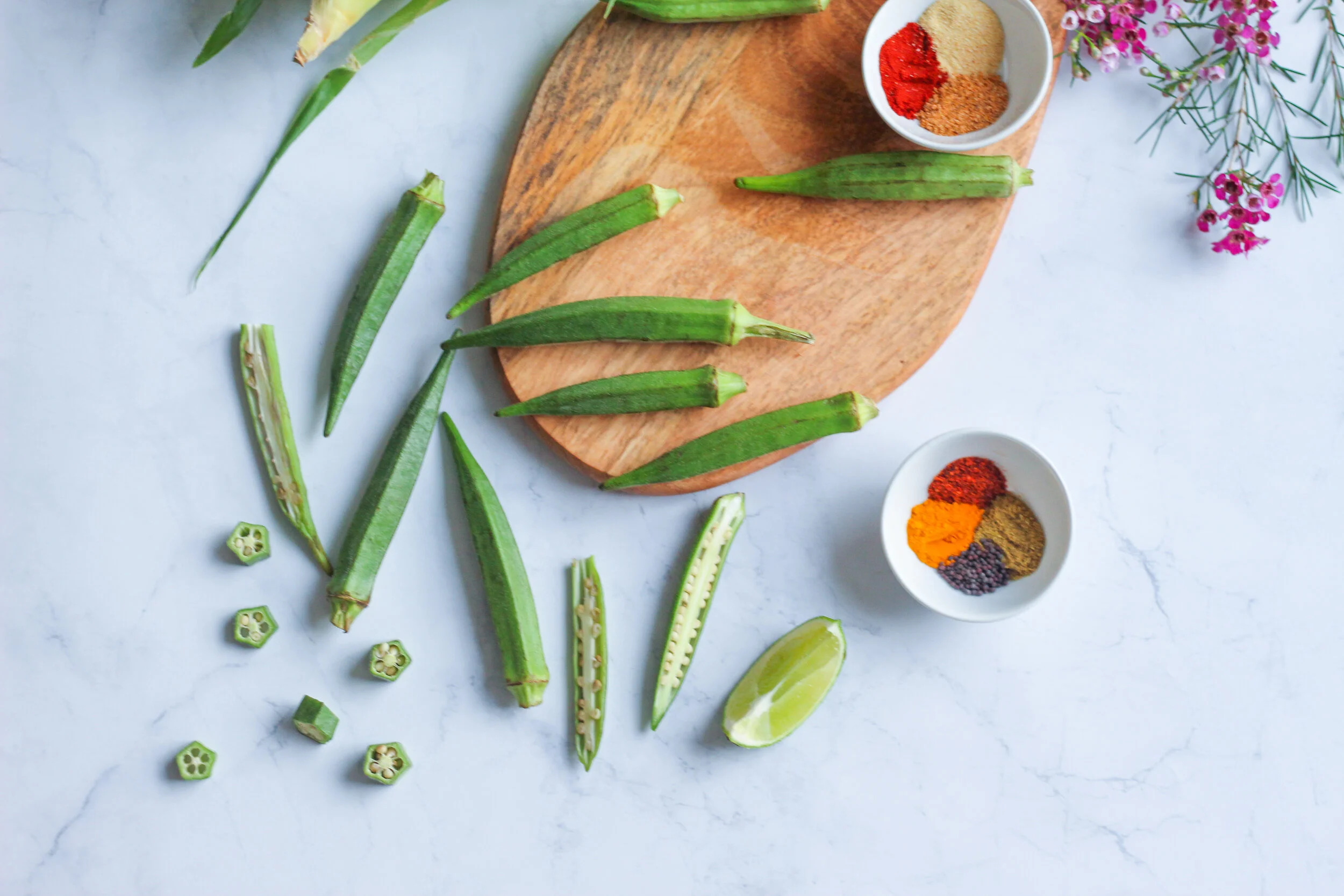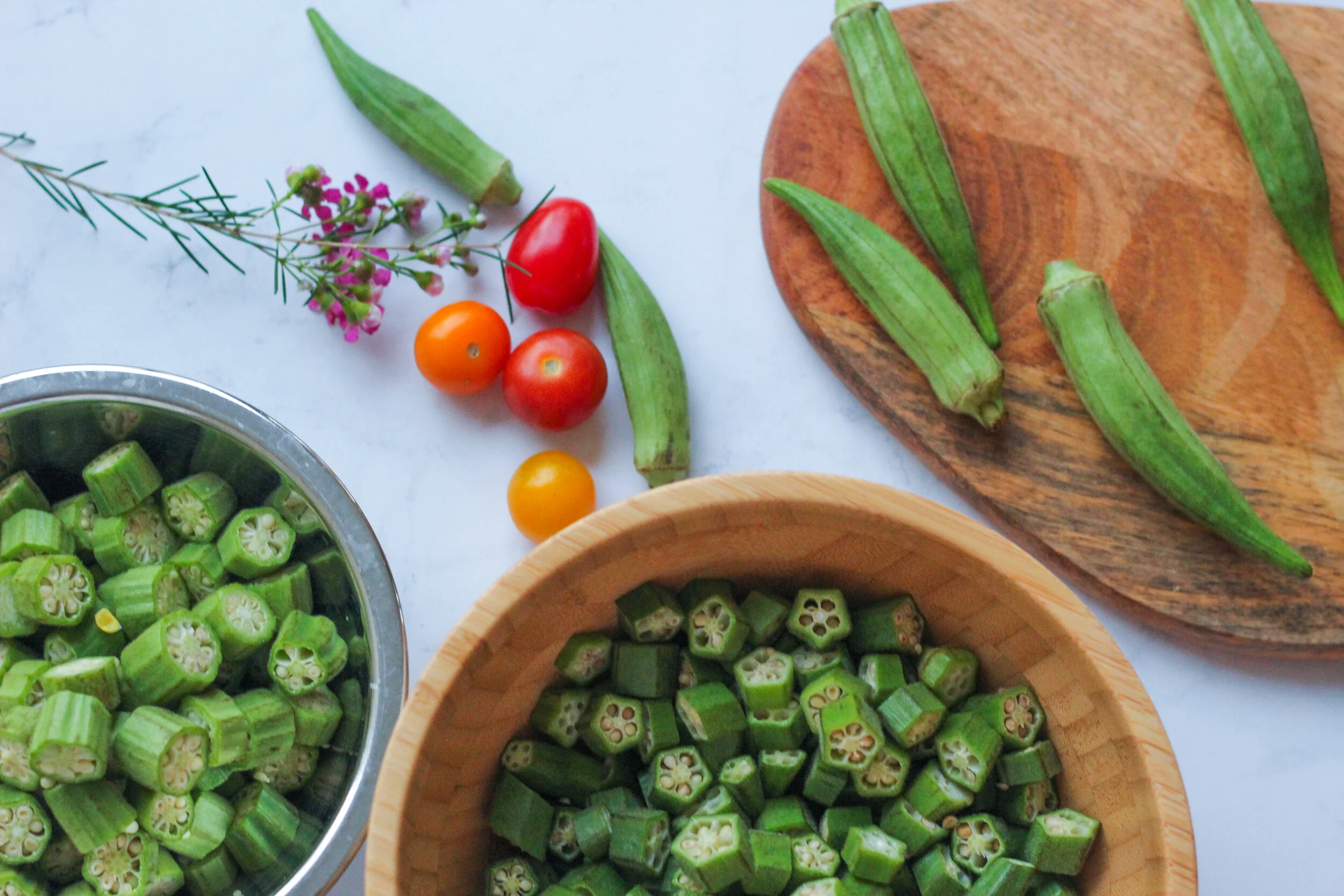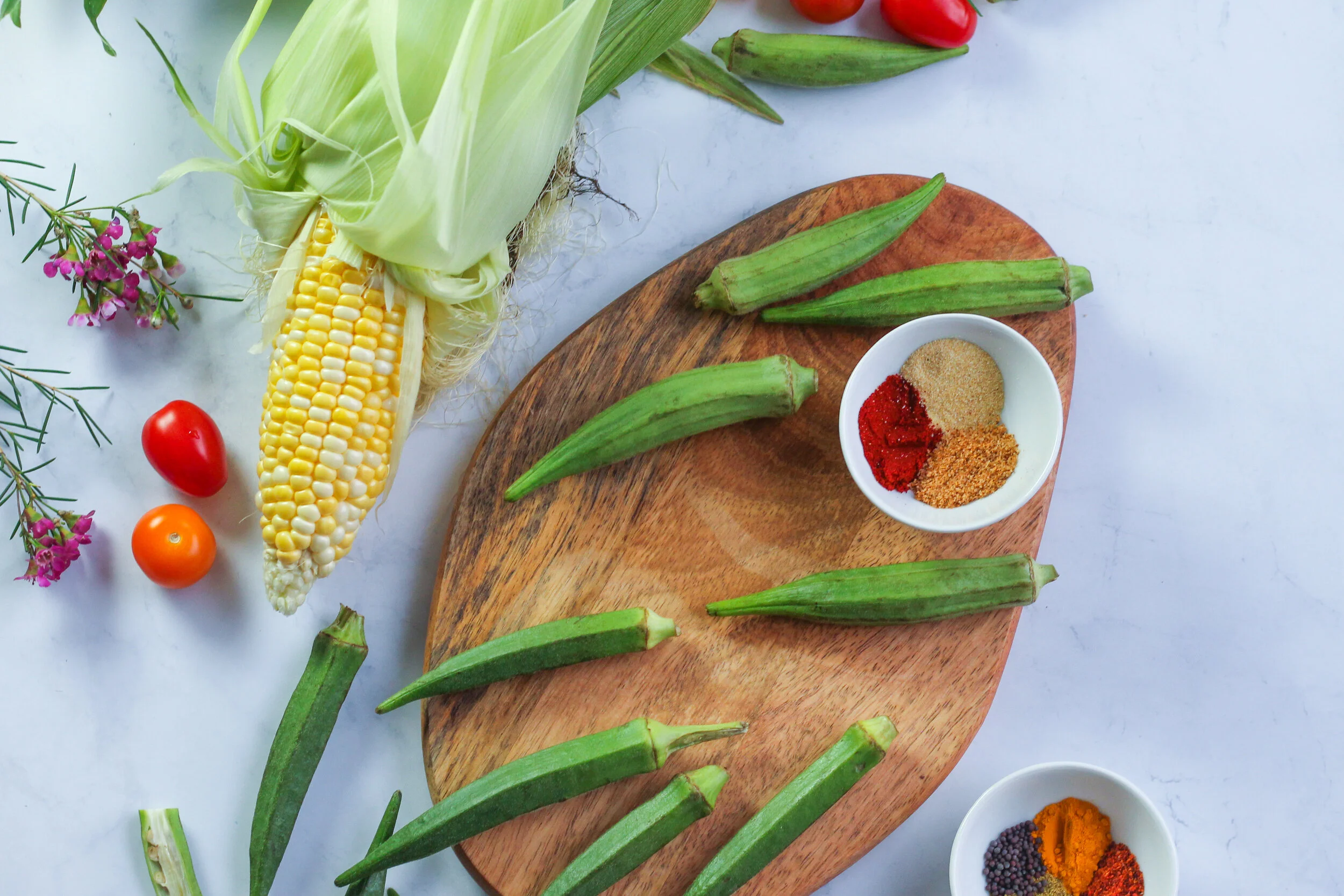When Two Cultures Collide: Okra
My mom says I’ve been sucking on boiled okra since I was 3 years old. I even cried when it was all gone. Okra is a part of my family. One of my favorite things about going to Tennessee, as a kid, was going to Mrs. Henry’s house to get fresh okra from her garden. It was the most beautiful okra I had ever seen. I created my own recipe for fried okra based on my grandmother’s recipe. My mom makes okra, in some form, for just about every holiday. I love it boiled, fried, grilled, roasted, in gumbo, in a stew, and baked into crisps. I. LOVE. OKRA!
Okra is by far my favorite vegetable. I say that often and usually get the response that people either don’t like it or have never had it. When I heard my friend and fellow chef, Ruchi of Tiffin Kitchen, say that she loved okra and that her mom cooks it perfectly, I knew we had to work together to change the bad wrap that okra has.
I’ve always known okra as a southern food staple, so I was incredibly eager to learn about okra in a different way. Ruchi and her family are from India. Not only did she teach me about how to prepare okra as an Indian dish, but she also taught me that the absolute BEST place to get fresh okra is the Indian grocery store. I haven’t seen okra that beautiful since visiting Mrs. Henry’s garden. Even when not in season, it’s stunning! I also learned that there are two different kinds of okra that are easily accessible here in Indiana. All of my dishes were prepared with what you would consider American okra. Ruchi’s dishes were prepared with Indian okra. Indian okra is very similar in appearance, but American okra tends to be a little bigger. Indian okra is a brighter shade of green and has smaller seeds.
Our two cultures collided to find out that while we prepare things differently, there are a lot of similarities. I’ve always known to add a splash of vinegar to boiled okra. I soak my cut okra in buttermilk when getting ready to fry it. All of these things include acid that helps reduce slime. Ruchi blew my mind by adding yogurt to her dish at the very end. It also has acid and has the exact same effect! What’s even more fascinating is that you couldn’t even tell there was yogurt in the dish. It was so subtle. A little really does go a long way.
Another similarity that Ruchi and I shared was that we both have a version of fried okra! That really is the best way, isn’t it? My traditional Southern Fried Okra is my grandmother’s recipe that I turned into my own. Grandma Lillie didn’t soak her okra in buttermilk, but I do! Traditionally breaded in cornmeal, I add a little cornstarch and flour to ensure a crispy texture. Ruchi’s fried okra is called Bhinda Bhajia. It’s fried in chickpea flour, y’all, and fried whole! It was so tasty. It almost reminded me of tempura.
One of the things I learned from Ruchi is how well different spices pair together. Now, seasoning food well is incredibly important to me, but using multiple spices for one vegetable is uncommon in my cooking. I loved how she blended the most beautiful and colorful spices to create Bhinda Shaak. A pan-fried okra dish. While Ruchi added beautiful bright colors with spices, I added bright colors with additional veggies in my Corn & Okra Succotash. This is a traditional southern dish usually prepared with corn, lima beans, and okra. I left out the lima beans because well…I hate them and still created a stunning and delicious dish.
It was an honor and privilege to collaborate with Ruchi on such a fun and nutritious vegetable. Check out her blog post to find out more details about her take on our favorite veggie. I am so glad I have someone that I can eat okra with all the time. We truly believe that okra is highly underrated and deserves so much more attention. We hope you try these recipes and get inspired to experiment more with okra.
All photos were taken by Ruchi




